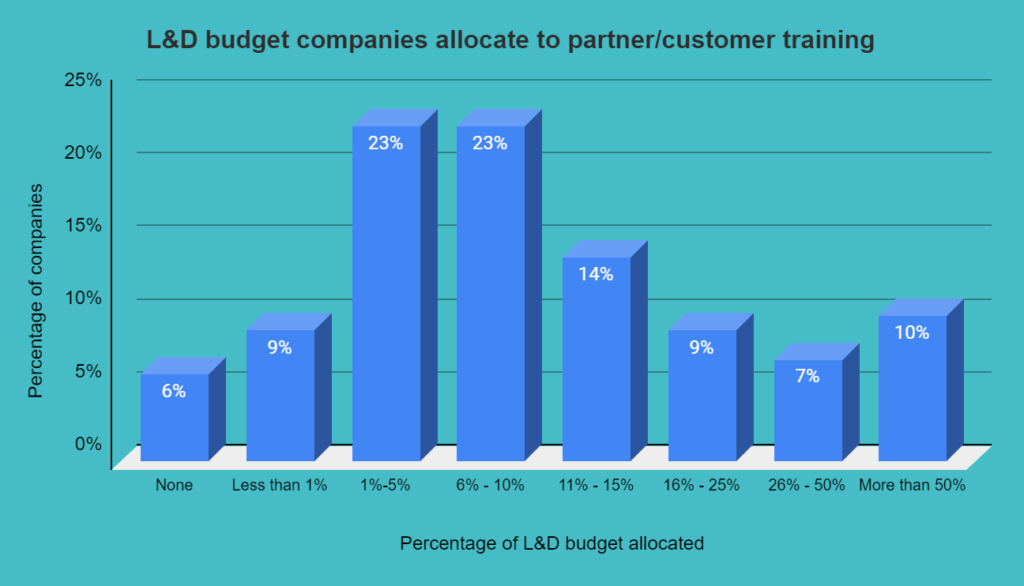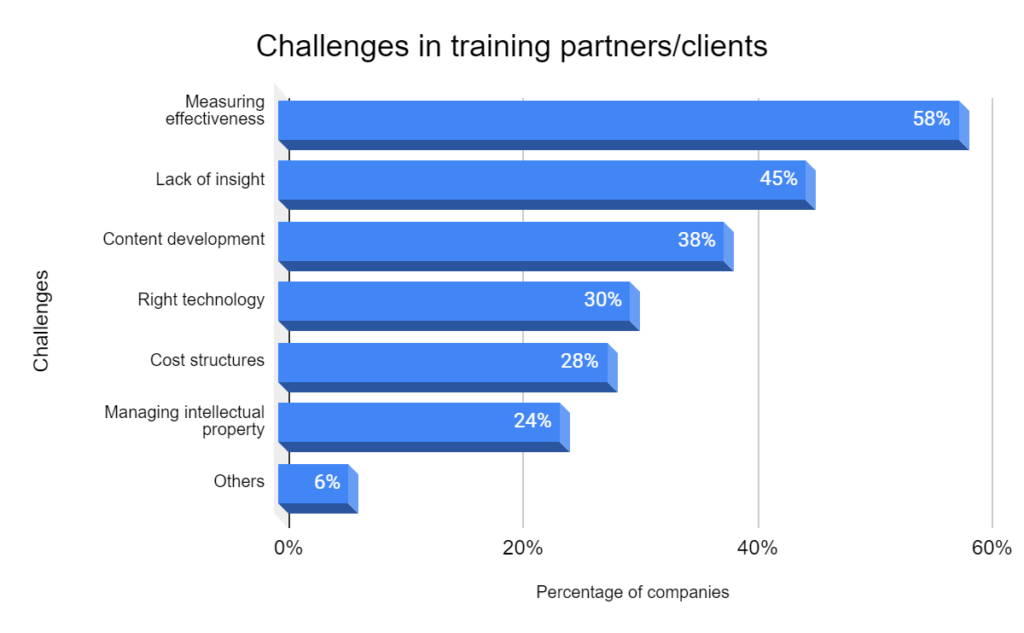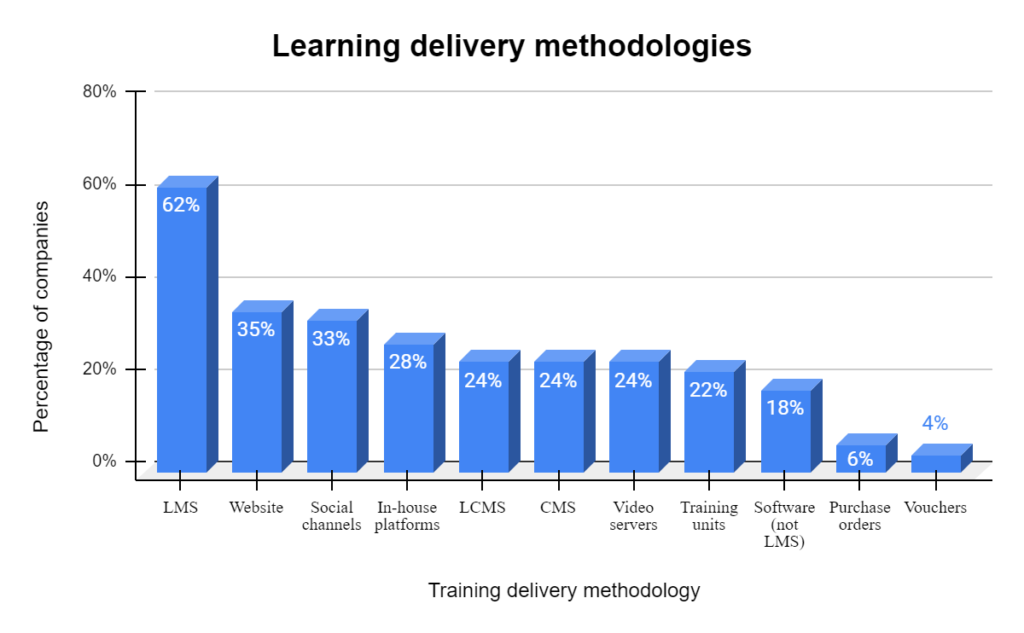Regarding eLearning, the most widespread audience is your organization’s employees. That makes perfect sense since your workforce will directly affect your business’s bottom line. Nevertheless, there are perks to letting your training programs be available to people outside your organization. Customer training is also one of those activities that can help you save a lot of money.
Let’s look more closely at the idea of customer training and discuss how you could set up a remote training system for your business.
Table of Contents
Customer training: A brief introduction

Customer training is a part of enabling an extended enterprise. It is the framework for instructing your clients about how to effectively use your merchandise or facilities that can meet their objectives. In practical terms, it includes offering the user learning knowledge and resources s/he requires to be effective and fulfill one’s company’s corporate objectives.
Ad: PlayAblo’s Enterprise-Grade Micro-Learning platform is built for millennial learners. Micro-Learning, assessments, and gamification features ensure learning outcome measurement and sustained engagement.
Find out more and request a custom demo!
3 key objectives of customer training
- At each customer journey’s touchpoint, find ways of attracting and retaining consumers.
- By providing education that adds value, you can improve the customer experience.
- Make the most of your service or product’s impact on your clients’ businesses.
Customer training varies from business to business, so there isn’t just one way to do it.
Instances of customer training: getting started, getting help, and more:
As was already said, there are many various ways to teach customers. Training resources can be formal, self-paced, and a mix of both based on what your customers react to best.
Usually, training courses for customers involve the following:
- Help getting started
- Learning at their own pace
- On-demand learning resources
- Knowledge libraries
- Programs for certification
Your customer training course should have a mix of the above content types. It will let your consumers select how and where they need to use your course materials.
Why is it essential to train your customers?

As per research by Brandon Hall, over 50% of companies disseminate training to external groups and non-employees. Customers, distribution partners, vendors, value-added dealerships, and franchise owners are all components of this.

Of those polled in the study, 45 percent stated that they purposefully offer training to clients, and 49 percent concur that educating customers enhances relationships with clients
The great news is that. What’s better? You don’t need to spend much more money to have these perks. Typically, as per the same report, such initiatives consume only 10 percent of most firms’ L&D finances but introduce a massive potential for organizations to:
- Increase brand recognition
- Improve how you work with customers
- Make more money and keep it coming in
- Make the whole customer experience better
Companies that do not consider all their possible learning experiences may miss out on crucial opportunities to enhance client relationships and boost sales and revenue.
One thing to remember is that customer training might not be helpful in all businesses or for all products and services.
For instance, customer training works well for companies selling software, electronics, and subscription-based offerings. All such businesses must add value at each phase of the buyer life cycle, demonstrate their effect on the organization, and guarantee that they’ve conveyed the benefits before the renewal date or up-selling possibility.
Customer training: Pros
A good customer training plan has many positive effects on your business and the customer experience. Some of the ways that customer training can help your business are:
Bringing in more money and spending less
Direct or indirect, good customer training will help to bring in more money. The cost of getting a new consumer is anywhere from 5 to 25 times greater than the price of keeping an old one.
When done well, the actual worth that client training brings can make customers loyal and help them have a better experience. This means more money coming in because pleased consumers are willing to pick your solutions again or renew their agreement.
In the same way, you can bundle and distribute instruction to your clients, which can give you new ways to make money.
Getting more people to use your offerings
People are more likely to use and appreciate an item if they know the process and how it helps them do their tasks. A customer training program helps your consumers get up to speed fast so that everyone is aware of the benefits and effects of your business.
As consumers get more acquainted with your brand via mentoring and on-the-job utilization, they are much more inclined to become fans and, possibly, internal proponents for your offerings. This helps get people to use your products/services and helps make it a must-have instead of a nice-to-have.
Keeping customers longer and giving them chances to buy more

Any sales representative or financial analyst will say that whenever it is time to request for upselling or a renewal, you must be capable of proving that your offerings add value to your buyer. If you cannot, your customer won’t pay more cash for a renegotiation, much less a cross-sell or upsell.
By guiding people and engaging buyers from the beginning, customer training ensures that your buyers are encouraged to derive significant benefits in their firm after using your merchandise.
Once that consequence is demonstrated, your sales department will find it simpler to build a case regarding why an extension is a wise option and why the consumer could benefit from additional products.
Getting people to support and promote a brand
The more clients can demonstrate the implications of your products and services, the more probable they are to now become brand ambassadors and superstars for your corporation, both externally and internally and before a wider audience.
Once clients become proponents, they morph into excellent marketing and sales assets, making great connections for research papers, event presenters, and sales citations.
Getting customer service costs down
Without customer training, all queries that emerge from pre-sales, onboarding, and continuing utilization of your service or product will have to be mobilized by somebody on your account or sales teams. As your business grows, the number of calls, tickets, conversations, and email messages can become daunting and take a lot of time and resources.
This is made easier by customer training, which lets you deal with common problems and questions in one place. Customers don’t have to ask your team when they face an issue; they can know the solutions on their own.
Customer education shouldn’t just help your business, of course. The objective is to develop programs that enable your clients, which benefits the company. Because of this, it’s crucial to know why your consumers might want customer instruction and what they’ll get from it.
Making customer onboarding more efficient and effective
Learning how to use a new product in the market can take a lot of time and work. Consumers expect their induction program to go as smoothly as possible so they can start making a difference as soon as possible in their company.
Well-organized onboarding initiatives help new customers get up to pace quicker and are expandable so that you can provide these perks to all new deals.
Setting up early value and return on investment
Consumers will have taken a chance on your offering to pay for it. They’ve pitched it before their bosses and maybe even the top leaders, and now they have to maintain the claims they make.
Coaching your customers helps them start quickly and demonstrates the value of a new initiative soon. It is a great way to make customers happy and can assist you in building a solid relationship with their company.
So now we know the importance of customer training, let’s discuss how to create your plan.
How to make a program to train customers?

Managing a process focused on external groups like customers comes with challenges. The lack of insight into these audiences makes it difficult for a company to measure the effectiveness of its efforts. It is already challenging enough to measure learning for internal groups, but the degree of separation with the extended enterprise makes it even more difficult.
Additionally, companies sometimes lack the right technology to execute a comprehensive enterprise strategy, relying instead on platforms and solutions that may have not been designed for this purpose.

You ought to know your customers wants to make an effective customer training plan. Your objective must be to obtain a 360-degree comprehension of how your consumers currently receive the details about your offerings, how they pose questions and gain support, and the content type they revert to best.
After this, you can make a training course for your clients with the most influence when and where they need it.
Here are some essential steps to take to do this:
Figure out where you can reach your customer service
The first stage is to define where customer training is most important. To help get your sales, accounting, consumer experience, and support personnel together to figure out how, when, and where they usually engage with customers.
Some examples of significant contact points are onboarding, tech assistance, help desk support, strategic guidance, and billing assistance.
Know what your customers want every time you interact with them
Once you’ve set up these contact points, collaborate with stakeholders to chart all core business difficulties and data requirements in each step listed above.
You can also talk back and forth with your clients during this activity. Ask them what kind of knowledge and guidance would aid them. Make sure they can pose questions in public forums. Look at your website traffic, facts and figures on how people use your products, and inbuilt search terms to find out what type of knowledge people want.
All this information will help you figure out what kind of customer training materials you should make and how to give them.
Deploy the right learning management system (LMS) and content
After you acquire a better understanding of the queries your consumers are posing, you can start thinking about the ideal delivery platform that caters to each category of information.

For example, an internet video sequence through an LMS could be the best onboarding method. A discussion board or knowledge base could be the best place for ongoing assistance. Consider making multiple variations of the same learning resources and testing them to check which portals and multimedia elements get the most attention.
Use blended learning to improve the customer experience
No matter what technologies and material you select, your customer training course should include a mix of the two. Different individuals learn and understand things a bit differently. Some people prefer learning at their pace, while others opt for a structured setting. Your customer training plan should try to meet the needs of all of these ways of learning.
Focus on offering a combination of self-directed, live, and hands-on learning. You should use live webcasts and group discussions for formal learning, while on-demand multimedia sequences, slide decks, and questionnaires can be utilized in self-directed learning.
Try a mix of on-demand, self-paced, and micro-learning to determine what’s best for your customers.
Set up the appropriate customer training KPIs and keep track of them
A consumer training plan is not finished without a strong definition of success metrics. These must be set up during the program’s design phase and should serve as a guide for all new instructional projects.
Choose one to three KPIs that will help you measure how well your customer training program is working. Instances involve time-to-value, learning engagement, retaining customers, the number of additional support queries, customer experience, registration rates, and ongoing customer spending.
Use learning data analysis tools to ensure you can track the effects of your consumer curriculums and report on them. Keep an eye on how these KPIs change over time to see if your customer training is making a difference.
Ad: PlayAblo’s Enterprise-Grade Micro-Learning platform is built for millennial learners. Micro-Learning, assessments, and gamification features ensure learning outcome measurement and sustained engagement.
Find out more and request a custom demo!
Conclusion
As you assemble the customer training plan, you’ll soon understand that picking the right platform is essential to succeed. We are biased, but we believe that the best way to train customers is with a robust LMS.
You can imagine how important it is to pick a suitable LMS. Selecting the correct one (or the improper one) is a vital part of whether or not your customer training course works.
Again, we’re a little prejudiced, but we believe that PlayAblo is excellent at each of the above key parameters. Do you wish to get more details? Contact our team, and one of our experts will get back to you.
Ad: PlayAblo’s Enterprise-Grade Micro-Learning platform is built for millennial learners. Micro-Learning, assessments, and gamification features ensure learning outcome measurement and sustained engagement.
Find out more and request a custom demo!







Comments are closed, but trackbacks and pingbacks are open.